Joshua Tree National Park
Joshua Tree National Park, located in southeastern California, is a unique and captivating desert landscape that has captivated visitors for generations. Named after the iconic Joshua Tree (Yucca brevifolia), the park boasts a diverse ecosystem that includes stark desert landscapes, towering rock formations, and a surprising abundance of life.

Joshua Tree National Park Overview
Joshua Tree National Park spans nearly 800,000 acres of rugged terrain shaped by natural elements like rain, wind, and extreme temperatures. Despite appearing barren, the park is home to diverse ecosystems that support a variety of plant and animal species adapted to the harsh climate.
The park is inhabited by desert bighorn sheep, black tailed jack rabbits, coyotes, kangaroo rats, and other small mammals. Additionally, it serves as a resting place for many migrating bird species during the winter months due to its location along the Pacific migratory bird flyway.
Named after the distinctive Joshua Tree, this park holds cultural significance as American Indian tribes value the tree for its leaves used in crafting materials and its buds and seeds as a nutritious food source.

Things to do in Joshua Tree National Park
Joshua Tree National Park is a playground for outdoor enthusiasts. From hiking and rock climbing to stargazing and wildflower viewing, there’s something for everyone.
Hiking
oshua Tree National Park offers a myriad of hiking trails for all skill levels, from gentle walks to challenging climbs. The trails wind through stunning desert landscapes, providing access to breathtaking views and unique geological formations. Some of the popular hiking trails in the park include:
Arch Rock
Bajada
Barker Dam
Cap Rock
Cholla Cactus Garden
Cottonwood Spring
…

Rock Climbing
Joshua Tree is a popular destination for climbers, boulderers, and highliners from all over the world. This desert climbing spot is well-known for its traditional crack, slab, and steep face climbing routes. With over 8,000 climbing routes, 2,000 boulder problems, and numerous natural gaps, Joshua Tree offers challenges suitable for climbers of all skill levels, making it a top-notch climbing location.
For those who are new to climbing or wish to enhance their skills, participating in a guided day or class could be beneficial. When selecting a climbing guide, it is important to ensure that they have the necessary permits to operate within Joshua Tree National Park. Guides must hold rock guiding certifications from reputable organizations like PCGI or AMGA, as well as certifications in Wilderness First Aid and CPR. Additionally, guides must carry insurance to ensure the safety of both themselves and the climbers, ultimately providing a safer climbing experience.
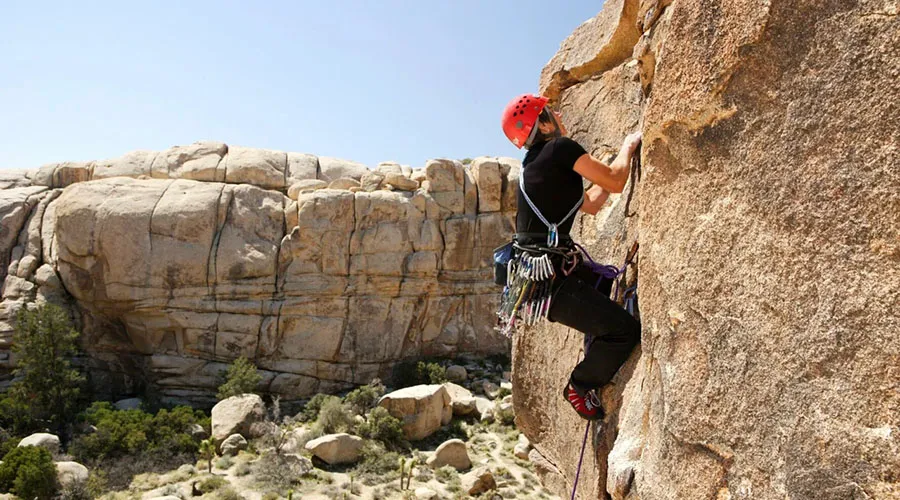
Stargazing
The night sky used to be filled with stars, planets, and meteors, but now many people can’t see it due to artificial lighting and pollution. This is a significant loss as our ancestors relied on the dark sky to tell stories and track time. Only recently have humans been unable to appreciate the beauty of the stars. Joshua Tree National Park in Southern California, known for its dark nights, provides visitors with the opportunity to see the Milky Way for the first time, as it is recognized as an International Dark Sky Park by the IDA.
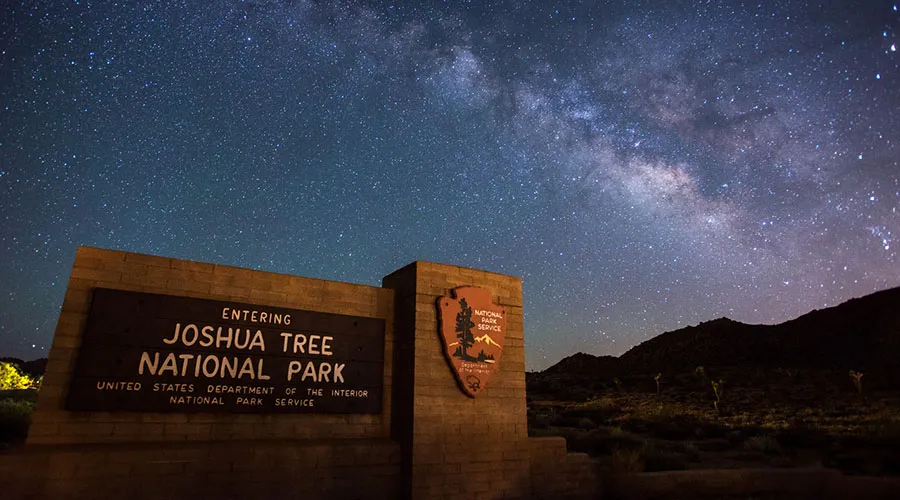
Ranger Programs
Explore Joshua Tree National Park through complimentary guided hikes, discussions, and evening events led by park rangers and volunteers. Gain insights into how both humans and wildlife have adjusted to thrive in the desert environment, as well as the impact of geological processes on the landscape.
Make sure to arrive a bit early to find parking. Children under 16 should be supervised by adults. While most activities are held outdoors, they may be rescheduled or moved indoors in case of severe weather or lightning risks.
Remember to wear a hat, apply sunscreen, and bring an ample supply of water. For evening events, pack warm clothing and a flashlight.
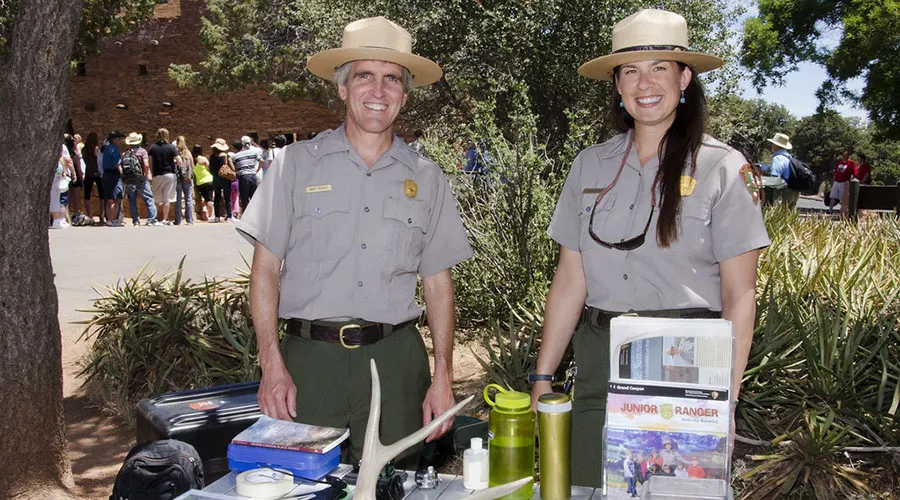
Backpacking
Joshua Tree National Park provides excellent backpacking opportunities with its breathtaking landscapes, scenic views, and vast wilderness areas. It allows visitors to enjoy solitude, explore remote locations, and connect with nature in a unique way. By following the rules and regulations, you can contribute to the preservation of the park and ensure a safe adventure.
Backpacking is suitable for experienced hikers with the necessary equipment and skills. It is not recommended for inexperienced campers who may struggle to find a suitable camping spot at established campgrounds. Camping is only allowed in designated backcountry areas and campgrounds, and it is prohibited at trailheads, roadsides, and day-use areas.

Wildflower Viewing
In the desert, many wildflowers grow very close to the ground to save energy and protect themselves from harsh conditions like strong winds and intense sunlight.
In the spring, Joshua Tree National Park is filled with a beautiful array of wildflowers. The park’s varied terrain creates ideal environments for various desert flowers, such as the famous white blooms of the Joshua Trees, colorful California poppies, and delicate desert lilies.
The prime time to see this natural wonder is usually from March to May when the desert bursts with vibrant hues. Visitors can hike the park’s trails and canyons to admire these brief floral exhibitions or join guided walks led by rangers to discover more about the park’s unique plant life.
Be mindful of where you step and avoid walking on vegetation and flowers. Without caution, you could unintentionally damage or crush wildflowers or plants before they have a chance to bloom.
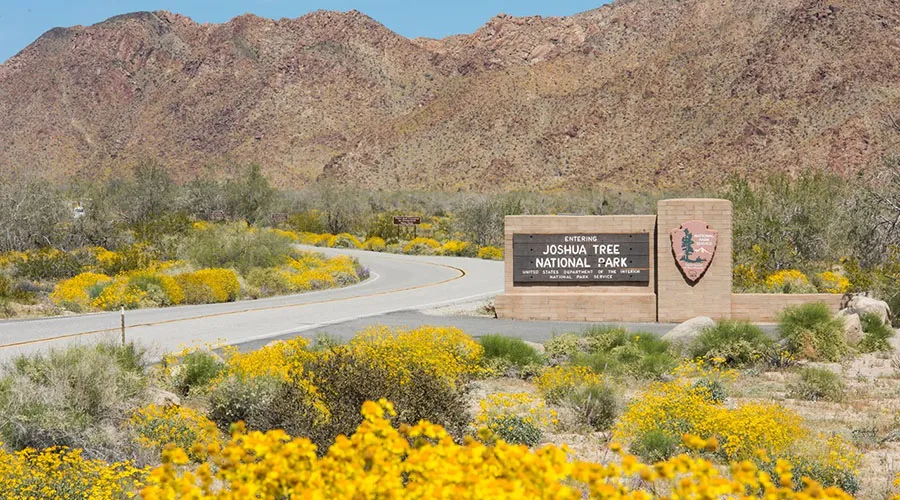
4×4 Backcountry Roads
Joshua Tree National Park has an extensive network of unpaved backcountry roads that are perfect for off-road vehicles and mountain biking. Covering over 1,000 square miles (2590 km) of designated wilderness, these roads offer a chance to experience the park’s untouched and rarely seen areas. They allow visitors to enjoy exploration, solitude, and thrilling adventures. But, it is important to plan ahead and be prepared before embarking on these roads.
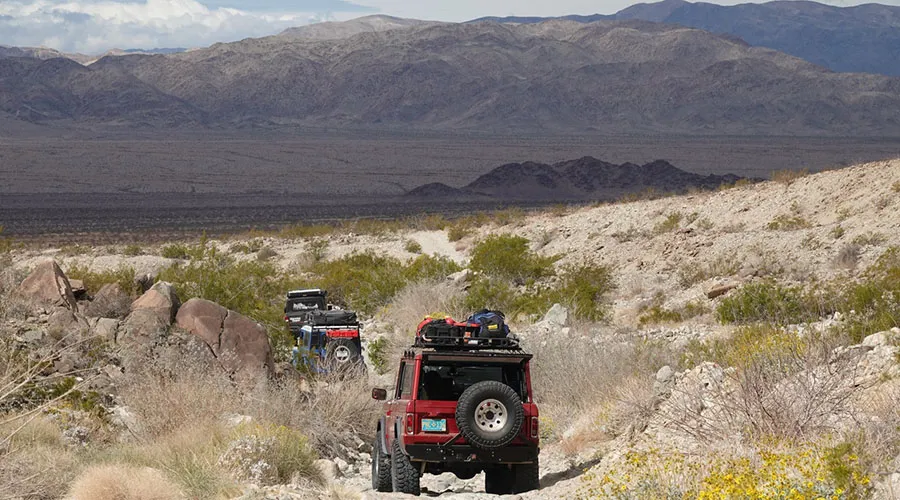
Biking
Cycling in the park is limited to roads that are open to vehicles. Bikes are prohibited on trails and there are no designated bike lanes. It is suggested to ride on the park’s backcountry roads, as they provide a chance to discover various areas with less traffic compared to the main paved roads.
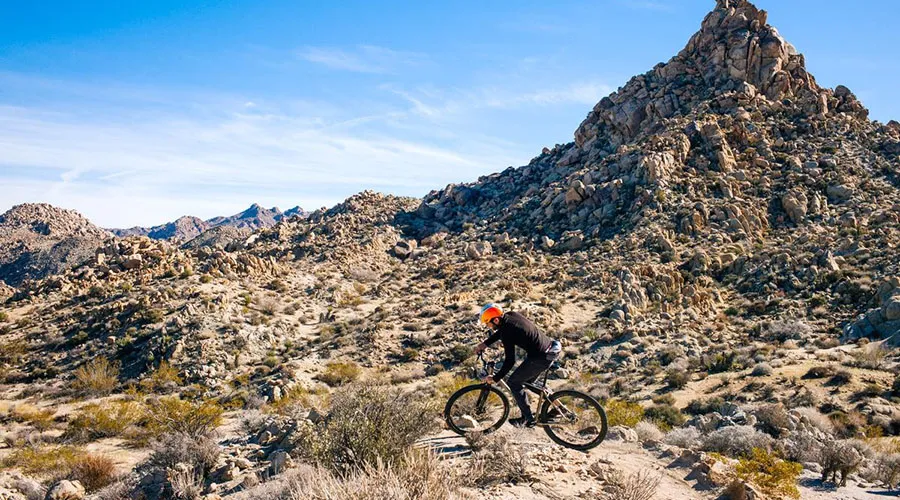
Horseback Riding
Horse riding has always been a favored method to explore Joshua Tree National Park, with 253 miles of equestrian trails winding through various terrains like open lands, canyons, and dry washes.
The delicate desert ecosystems necessitate careful handling, as it takes a long time for disturbed desert soils to recover. Therefore, it is crucial for riders to stick to designated trails to minimize impact.
One of the challenges faced by riders and horses in the park is the scarcity of drinking water. It’s essential to plan ahead as stock animals may not be able to access natural or man-made water sources within the park.

Places to Stay in Joshua Tree National Park
Whether you prefer camping under the stars or the comfort of a cozy bed, Joshua Tree offers various accommodation options to suit your needs.
Camping
Camping is a popular way to experience Joshua Tree National Park. The park offers several campgrounds, each with its own unique character and amenities. Some of the popular campgrounds include:
Black Rock: 99 sites, $25 per night, 4,000 feet in elevation. Water, flush toilets, tables, fire grates and a dump station.
Cottonwood: 62 sites, $25 per night, 3,000 feet in elevation. Water, flush toilets, tables, fire grates and a dump station.
Indian Cove: 101 sites, $25 per night, 3,200 feet in elevation. Pit toilets, tables and fire grates. No water.
Jumbo Rocks: 124 sites, $20 per night, 4,400 feet in elevation. Pit toilets, tables and fire grates. No water.
Ryan: 31 sites, $20 per night, 4,300 feet in elevation. Pit toilets, tables and fire grates. No water.

Hotel and Resort
For those who prefer a more comfortable and amenity-rich experience, Joshua Tree National Park offers several hotels and resorts in the surrounding areas.
High Desert Motel Joshua Tree National Park (2-star)
Looking for a family-friendly motel in Joshua Tree doesn’t have to be hard. High Desert Motel Joshua Tree National Park is a great choice for travelers like you, offering comfortable rooms with amenities like a flat-screen TV, fridge, and air conditioning. Staying connected is easy with free wifi. Guests can enjoy 24-hour front desk, check-in, and security services. The motel also has a pool and BBQ facilities to enhance your Joshua Tree experience.
- Address: 61310 29 Palms Hwy, Joshua Tree, CA 92252-1906
- Price Range: From $60 – $78/night depending on the season and demand

Spin and Margie’s Desert Hideaway
Spin and Margie’s Desert Hideaway is a desert retreat featuring four elegantly furnished suites, a classic Airstream trailer with a secluded outdoor bathing area, and a modern standalone cabin on five acres. Unwind in the private courtyard surrounded by indigenous desert flora, a recently built pool with cabanas, and a calming fountain. Located just a short 5-minute drive from the entrance to Joshua Tree National Park, this is the getaway you’ve always envisioned.
- Address: 64491 29 Palms Hwy Cross street is Sunkist, Joshua Tree, CA 92252-5203
- Price Range: From $145 – $185/night depending on the season and demand
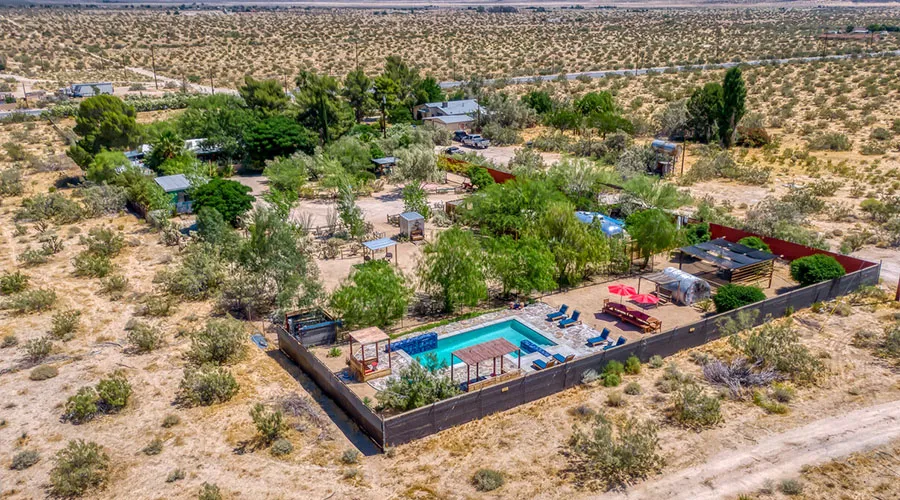
Joshua Tree Inn
The Joshua Tree Inn, established in 1950, is a Hacienda-style accommodation conveniently situated just six miles away from the stunning Joshua Tree National Park. Known for its welcoming atmosphere and cozy rooms, the Inn has been a popular choice for visitors exploring the remarkable Mojave Desert in California.
Designed in a square horseshoe layout to ensure privacy, all eleven rooms are located on the ground level with views of a desert courtyard and a spacious pool. The decor is uniquely diverse. Guests at The Joshua Tree Inn can enjoy amenities such as a large swimming pool, a tranquil zen courtyard with a koi pond, access to the dining room, and a gift shop. Additionally, complimentary coffee, tea, and morning snacks are provided for guests.
- Address: 61259 Twentynine Palms Highway, Joshua Tree, CA 92252
- Price Range: From $171/night depending on the season and demand

Dining
Joshua Tree National Park and the surrounding communities offer a variety of dining options to suit all tastes and budgets. From local cafes and diners to gourmet restaurants, visitors can find a wide range of culinary experiences.
Crossroads Cafe
The Crossroads Cafe is a typical American Diner situated on 29 Palms Hwy, close to the main entrance of Joshua Tree National Park. They serve a diverse range of traditional diner dishes as well as special homemade meals prepared with care. Their menu caters to various dietary needs, offering options like bacon pancakes, hamburgers, fish tacos, and vegan chorizo eggs. There is something on their menu for everyone to enjoy.
- Address: 61715 29 Palms Hwy, Joshua Tree, CA 92252-2311
- Open time: 07:00 AM – 8:00 PM
- Prices range: $8 – $12

Joshua Tree Saloon
A beloved spot offering delectable wood-fired pizzas and handmade brews, Joshua Tree Saloon stands as the entry to Joshua Tree National Park. Since 1984, this family-friendly establishment has been welcoming guests every day of the year, and it continues to be the go-to destination for scrumptious fares in a lively environment.
- Address: 61835 29 Palms Hwy, Joshua Tree, CA 92252-2313
- Open time: 10:00 AM – 11:00 PM
- Prices range: $7 – $20
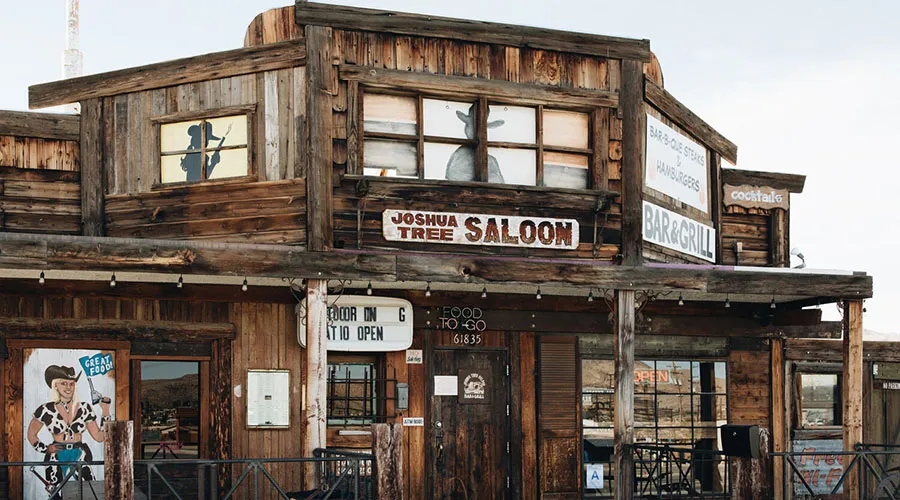
Country Kitchen
Journey to Country Kitchen, where you’ll find the longest continually operating restaurant in Joshua Tree. This cozy, welcoming diner is located near the West Entrance of Joshua Tree National Park, offering home-cooked meals to nourish your soul.
- Address: 61768 29 Palms Hwy, Joshua Tree, CA 92252-2301
- Open time: 06:00 AM – 3:00 PM
- Prices range: $6 – $20

Planning Your Trip to Joshua Tree National Park
Planning your trip to Joshua Tree involves choosing the best time to visit and figuring out how to get there.
Visiting Time
The best time to visit Joshua Tree National Park can vary depending on individual preferences and the desired experience. Here are some key considerations:
Spring (March-May): This is the prime season for wildflower viewing and milder temperatures, making it an ideal time for hiking and outdoor activities.
Summer (June-August): Summers in Joshua Tree can be extremely hot, with temperatures often exceeding 100°F. This is the off-peak season, but early morning and late evening visits can still be enjoyable.
Fall (September-November): The weather cools down, making it a comfortable time for hiking, rock climbing, and other outdoor pursuits.
Winter (December-February): Winters in Joshua Tree are mild, with cooler temperatures and fewer crowds, making it a great time for stargazing and exploring the park’s quieter areas.
Regardless of the season, visitors should be prepared for the desert climate, with ample water, sun protection, and appropriate clothing.
Spring in Joshua Tree National Park
Summer in Joshua Tree National Park
Fall in Joshua Tree National Park
Winter in Joshua Tree National Park
Transportation
Joshua Tree National Park is located in southeastern California, approximately 2.5 hours east of Los Angeles and 4 hours northeast of San Diego. The park is accessible by several major highways, including Interstate 10, State Route 62, and State Route 177.
For visitors arriving by air, the nearest major airports are Palm Springs International Airport (PSP) and Los Angeles International Airport (LAX), both of which offer rental car services and shuttle options to the park.
Once inside the park, visitors can explore the various destinations and trailheads by private vehicle, as the park’s roads are well-maintained and accessible for most passenger cars. Alternatively, visitors can use the park’s free shuttle service, which `operates during peak seasons and connects the main visitor centers and campgrounds.

Conclusion
Joshua Tree National Park is a remarkable desert oasis that offers a truly unique and captivating experience for visitors. From its iconic Joshua Trees and towering rock formations to its diverse array of recreational activities, the park is a testament to the resilience and beauty of the Mojave and Colorado Deserts. With careful planning and a spirit of adventure, visitors can immerse themselves in the park’s remarkable natural wonders and create lasting memories of their time in this desert wonderland.
Joshua Tree National Park Photos
Q&A for Joshua Tree National Park
Joshua Tree National Park encompasses over 800,000 acres, spanning across the Mojave and Colorado Deserts.
The best time to visit Joshua Tree National Park can vary depending on individual preferences, but the spring (March-May) and fall (September-November) months are generally considered the most comfortable and optimal times for outdoor activities.
Some of the must-see attractions in Joshua Tree National Park include the iconic Joshua Trees, the Skull Rock formation, the Cholla Cactus Garden, and the stunning rock formations and canyons throughout the park.
Joshua Tree National Park offers a wide range of outdoor activities, including hiking, rock climbing, stargazing, backpacking, wildflower viewing, 4×4 backcountry exploration, biking, and horseback riding.
Visitors to Joshua Tree National Park can choose from a variety of accommodation options, including camping in one of the park’s several campgrounds or staying in hotels, resorts, or vacation rentals in the surrounding communities.
Joshua Tree National Park is located in southeastern California and is accessible by several major highways, including Interstate 10, State Route 62, and State Route 177. Visitors can also fly into nearby airports, such as Palm Springs International Airport (PSP) or Los Angeles International Airport (LAX), and then rent a car or use shuttle services to reach the park.
Yes, Joshua Tree National Park offers a variety of ranger-led programs and activities, including guided hikes, campfire talks, the Junior Ranger program, and astronomy talks, which provide visitors with a deeper understanding and appreciation of the park’s unique features.
Visitors to Joshua Tree National Park should pack items such as sturdy hiking boots, sun protection (hats, sunscreen, sunglasses), plenty of water, snacks, a portable charger, and any necessary gear for their planned activities (e.g., climbing gear, biking equipment, etc.).
Visitors should be aware of the park’s seasonal conditions, as summers can be extremely hot, and some trails or areas may be closed during certain times of the year for conservation or safety reasons. It’s always a good idea to check the park’s website or speak with rangers for the latest information.
To plan a successful trip to Joshua Tree National Park, visitors should research the park’s various attractions and activities, decide on the best time to visit based on their interests, make any necessary reservations (e.g., camping, guided tours), and familiarize themselves with the park’s regulations and safety guidelines.
